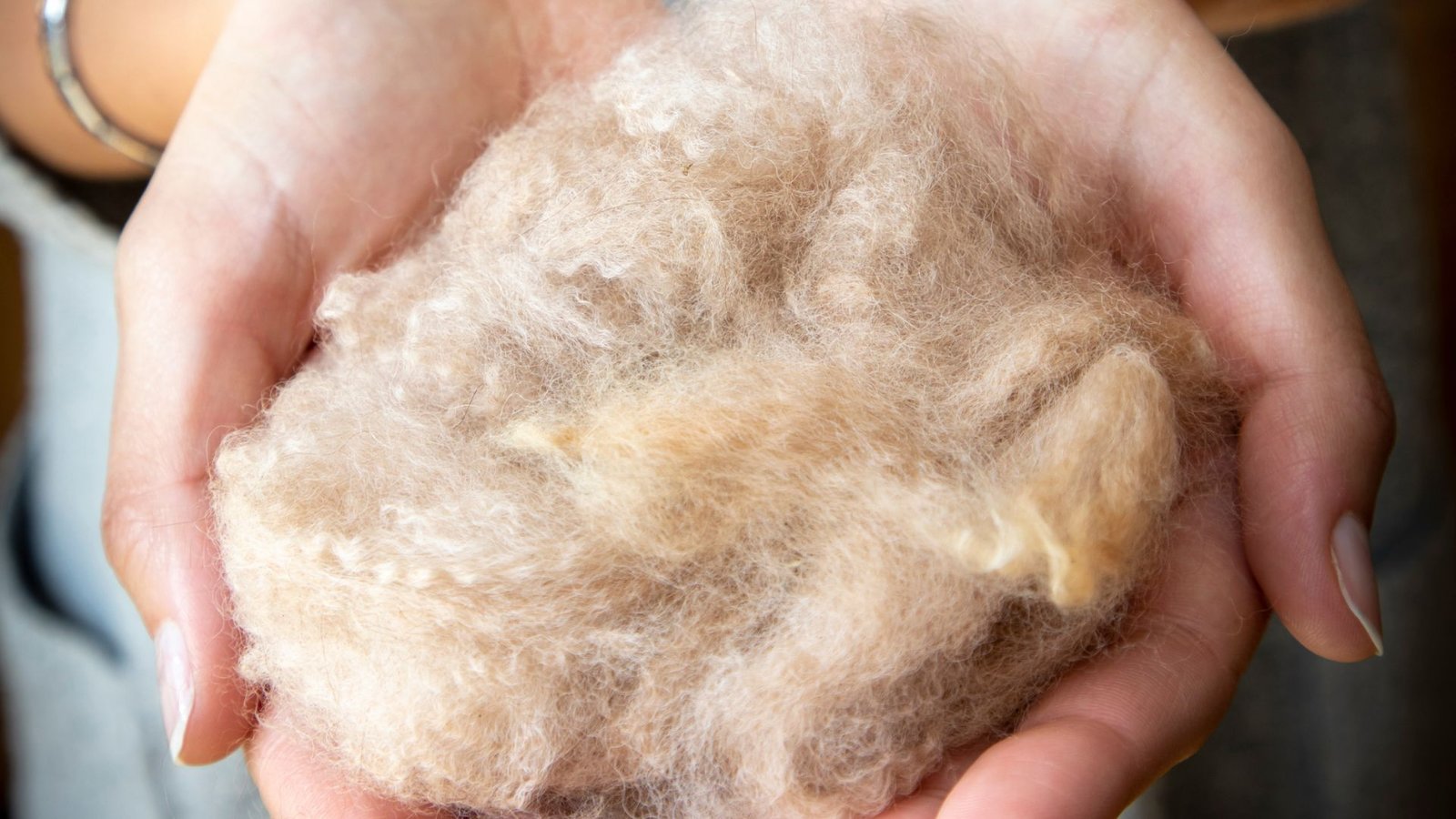Proven Techniques and Tips for Cleaning and Maintaining Alpaca Fur
If you’re like me, you’ve fallen in love with the softness and warmth of alpaca fur. But how do you keep it clean and looking its best? That’s the question I’ll be answering in this post.
Cleaning alpaca fur isn’t as daunting as it might seem. With the right knowledge and tools, it’s a breeze. I’ll guide you through the process, sharing my tried and tested tips along the way.
Whether you’ve got an alpaca rug, blanket, or garment, this guide will help you keep your alpaca fur items in top-notch condition. Let’s dive right in and get started.
Key Takeaways
- Regular cleaning of alpaca fur items not only helps maintain their quality and appearance, it also reduces potential health risks by preventing the buildup of allergens.
- Hand washing is a cost-effective and gentle method for cleaning alpaca fur. Use cold or lukewarm water and mild detergents, avoid scrubbing harshly, and rinse thoroughly.
- Prior to cleaning, inspect the alpaca fur for stains or excessively soiled areas, which may require pre-treatment. Also, remember to prepare a thorough cleaning bath with lukewarm water and dissolved soap.
- Alpaca fur can also be safely machine washed if done correctly. Always use the gentlest settings, use mild soap, and consider using a mesh laundry bag for added protection.
- When drying alpaca fur, avoid wringing out or twisting. Instead, let the item air dry in a warm place away from direct sunlight. If there are stubborn stains, treat them again before the garment is completely dry.
- To remove stains from alpaca fur, use mild or natural stain removers, and ensure that all soap is thoroughly rinsed out of the fur.
- Post-cleaning maintenance includes avoiding direct sunlight or heat, and never wringing or twisting the items.
- Regular brushing, proper storage, preventative practices, and rotating use are essential tips for maintaining alpaca fur items in between cleaning sessions.
Why Cleaning Alpaca Fur is Important
Keeping alpaca fur clean can make a difference in more ways than you might immediately realize. Alpaca fur, known for its exceptional softness and warmth, requires regular maintenance to keep its quality intact. On one hand, clean fur ensures the durability of your alpaca items. On the other, it can prevent potential health issues.
To put it in perspective, let’s delve into the benefits of routinely cleaning alpaca fur.
Preserving the Quality
If you’ve invested in an alpaca fur item such as a blanket, sweater, or rug, you’d naturally want it to last as long as possible. Regular maintenance, including cleaning, aids in conserving the texture and appearance of alpaca fur. Practicing routine cleaning can prolong the lifespan of alpaca items.
Protection Against Allergens
Another core advantage of regular cleaning relates to health implications. Alpaca fur – just like any other – can attract dust, allergens, and mites over time. With regular cleaning, it’s possible to minimize the accumulation of these unwanted elements. Simply put, keeping your alpaca fur clean can help you avoid the risk of allergies.
Enhancing Comfort
Who doesn’t love curling up under a soft, warm alpaca blanket? I know I do. Regularly cleaning the fur ensures it remains as plush and cozy as it was when you first bought it. This not only enhances the item’s usability but also provides you with ultimate comfort every time you use it.
As we explore the aspects of cleaning and maintaining alpaca fur in the upcoming sections, remember that keeping your alpaca items dirt-free is about more than aesthetics – it’s a necessity for the item’s longevity, your health, and your comfort.
Understanding Alpaca Fur Cleaning Techniques
Now that you see the value in maintaining your alpaca items, let’s dive deeper into the specifics. How exactly do you clean alpaca fur?
Firstly, it’s key to remember gentleness is your best tool. Being rigorous or overzealous can damage the delicate fibres, compromising the item’s quality and lifespan. Ideally, you should aim for less abrasion and more tender loving care.
Dry cleaning is a time-tested technique for alpaca fur. While it’s a convenient route, it’s also an expensive one if you’re considering it for regular care. A more cost-effective approach is hand washing, which you can do right at home.
To effectively clean your alpaca items, follow these steps:
- Fill a basin with cold or lukewarm water. Avoid hot water as it can shrink the alpaca fibres.
- Add a small amount of mild detergent. It’s better if it’s baby shampoo or a hair product without harsh chemicals.
- Immerse your alpaca item in the solution and gently agitate it, being careful not to twist or scrub it.
- Let it soak for about 15 minutes, then rinse thoroughly but gently, ensuring to get all soap out.
- Lay the item flat on a dry towel and roll it up to absorb excess water. Don’t wring it as this can cause the item to lose its shape.
While this cleaning method might seem laborious, it’s the best way to guarantee the longevity of your alpaca items. After all, these items are an investment. With proper care, they can offer warmth and comfort for a lifetime.
Preparing the Fur for Cleaning
Hand washing alpaca fur items is indeed a cost-effective method. But, to get the best results, these items need more than just being tossed in lukewarm water and soap. They require a bit of preparation. A important step that can radically enhance the effectiveness of cleaning. Now, let’s delve into that.
The first step in preparing alpaca fur for cleaning is inspecting the fur. I carefully look at each piece to spot any loose threads, stains, or areas of significantly dirty or matted fur. It’s good to remember that these areas might need extra attention during cleaning.
Next, pre-treatment is key. For any stains you observed during the initial inspection, pre-treatment methods will work wonders. You can pre-treat stains by applying a mild soap directly to the affected area. Let it sit for about 15 minutes, then, rinse it out with water. Hold any stained or excessively soiled areas under gently running cold water. Mild soap and cold water work together to ease out any dirt trapped in those areas.
Before you submerge the item completely, I recommend you check for color-fastness. Wet a small, hidden spot on the item, applying a small dab of the detergent, and rinse. If the color stays the same, then it’s safe to proceed.
And finally, it’s time to prepare the cleaning bath. Fill a clean sink or basin with lukewarm water. Add enough mild soap or detergent to the water and stir until it’s fully dissolved. Assuring a proper cleaning bath that’s gentle on the alpaca fur and tough on dirt.
In the section following this one, we’ll continue with the actual washing process, highlighting the best practices and detailing how to do it effectively after the fur has been well-prepared. Now that we’ve laid out the foundation the wash routine, the actual cleaning will be so much more effective.
Handwashing Alpaca Fur
To effectively clean alpaca fur items, handwashing offers an unbeatable solution. I can’t stress enough just how much of a difference a gentle touch makes when cleaning these delicate items like sweaters, blankets, and rugs.
Now you may ask, why hand wash? Well, aside from being cost-effective, it’s the safest approach to prevent any damage to the fur. Machine washing can be rough, potentially causing snags and pilling, effectively shortening the lifespan of your alpaca items.
The first step to handwashing is by filling a tub or sink with cool or lukewarm water. Cold water keeps the fibers from felting, so it’s best to avoid hot water or significant temperature shifts. Alongside the water, feel free to add a small amount of a gentle, chemical-free, and color-safe detergent.
Next comes the immersion of the alpaca item. Make sure it’s fully submerged in the water to allow the cleaning solution to penetrate thoroughly. It’s best to allow the item to soak for about 10-15 minutes. During this time, gently agitate the water with your hand to aid in removing dirt.
After soaking, ensure you rinse the item thoroughly. Removing soap residue is key to preserving the integrity of the alpaca fur. Remember to be gentle, avoid wringing or twisting the item. Instead, squeeze out excess water gently to avoid causing damage.
For drying, don’t toss the alpaca item to your ordinary dryer. In fact, lay it on a clean, dry towel and press gently to remove further excess water. You can then reshape your item as needed and leave it to air dry.
The laundering process may seem delicate, but with practice and perseverance, it can become second nature.
Lastly, always remember that careful handling is vital when washing alpaca items. Proper cleaning not only ensures the item’s longevity but also upholds its warmth, softness, and natural luster.
Machine Washing Alpaca Fur
Sure, hand washing may seem safer, but truth is, Machine Washing Alpaca Fur can also be safe when done correctly. It’s essential to know the dos and don’ts of machine washing alpaca items to avoid damaging their delicate fibers.
It’s crucial to use the gentlest settings on your washing machine. This means selecting a cold water, delicate, or hand-wash cycle. These will have less agitation, reducing the risk of damage to your alpaca items. Also, it’s best to avoid the spin cycle or choose a low-speed spin, as harsh spinning could lead to felting—the tangling and clumping of wool fibers.
When it comes to detergent, again go gentle. Just like with hand washing, alpaca fur needs a mild soap that’s free of strong chemicals. I suggest using a wool or delicate fabric detergent. And remember, less is more when dealing with delicate items like alpaca fur.
The next point might sound surprising, but it’s wise to place your alpaca item inside a mesh laundry bag or even a pillowcase before washing. This gives an extra layer of protection, preventing the item from being tossed around too much inside the machine.
Once the wash cycle is over, resist the temptation to wring or squeeze the water out of your alpaca fur items—remember, they’re fragile. Instead, gently blot them with a towel to absorb moisture, keeping the fur’s delicate fibers intact.
Moving on to drying, much like with hand washed items, machine washed alpaca items should be air dried. This means laying them flat on a clean, dry towel, and avoiding sunlight. Don’t use a clothes dryer, as the heat can make the fur shrink, get matted, or even cause discoloration.
The magic of machine washing alpaca items lies in the attention to detail, gentleness, and patience required. It won’t be as simple as tossing in your regular laundry, but treating these precious items with the care they deserve means you’ll be able to continue enjoying their warmth, softness, and natural luster for years to come.
Drying Alpaca Fur
After washing your alpaca fur items, whether by hand or machine, correctly drying them is paramount to maintain their quality, softness, and longevity. It’s worth keeping in mind that the way you handle these premium items during the drying process could be the difference between a soft, lustrous alpaca garment and a matting, shriveled one.
One critical aspect to note when drying alpaca fur is that it should never be wrung out or twisted. This action can break the fibers and cause irreversible damage to the items. Instead, aim to blot out excess water gently using a clean, absorbent towel. Lay your item flat on the towel, roll it up, and apply light pressure to soak up excess water. Remember, it’s not about wringing but blotting.
Another vital point is that Alpaca fur should be air-dried rather than using a mechanical dryer. The heat from dryers can cause shrinkage and matting. Find a flat surface away from direct sunlight or heat to let the fur dry naturally. Ensure there’s sufficient air circulation to facilitate even drying and prevent the growth of mold or mildew. Flipping it occasionally is a good idea to speed up the drying process.
In case you have stubborn stains on your alpaca fur items that didn’t quite come off during washing, this would be the perfect time to treat them before the garment is completely dry. Use mild, natural stain removers and gently work on the stained areas without rubbing or scrubbing as that could damage the fibers.
Following these tips on drying alpaca fur is a sure way of preserving my investment. Ensuring gentle handling and patience throughout the cleaning and drying process keeps those luxurious alpaca fur items as good as new, serving me for years to come, and providing the warmth and comfort worth every penny spent.
Removing Stains from Alpaca Fur
Encountering stains on your alpaca fur items can be daunting. But, hey! Don’t worry, I’m here to guide you through this process with my tried and best techniques. Stains should be treated before the items are completely dry if possible. I recommend using eco-friendly, mild, or natural stain removers. Harsh chemicals or bleach can damage the fiber, reducing its softness and longevity. Moreover, they can cause discoloration, which we definitely wouldn’t want.
Let’s get into the specifics of how to deal with those pesky stains, shall we? Apply the stain remover directly to the blemish. Gently dab or rub the area with a soft cloth or sponge. Remember – gentleness is key! The alpaca fur is delicate so don’t be too hard on it.
After you’ve treated the stain, rinse the area thoroughly with cold water. Make sure all the detergent is out of the fur. Trapped detergent can lead to a build-up of residue which can make your alpaca fur item lose its luster and softness.
I’d suggest repeating the process as needed for tougher stains. Be patient and persistent. Some stains may require multiple treatments to completely come out. But believe me, your patience will pay off when you see your alpaca fur item spotless again!
Ok, I feel we’ve covered a lot about removing stains from alpaca fur items. Your next question might be about maintaining the quality of your items after cleaning. Well, let’s find out in the next section.
Maintaining Alpaca Fur Post Cleaning
After taking such delicate care of your alpaca item’s cleaning, it’s paramount to keep up that meticulousness post-cleaning as well. Recovering from a sloppy aftercare can be an uphill battle, so let’s not risk it.
Just keep following my advice and your beloved alpaca fur items will stay top-notch for years to come. It’s a promise!
Firstly, avoid wringing or twisting the items to remove excess water after washing. Instead, lay the item flat on a clean towel and gently roll it up to blot out as much water as possible. Then, unroll and let it air dry.
Keeping alpaca fur items away from direct sunlight or heat is crucial. Such exposures can lead to shrinkage, dullness, or even burn the fabric.
Tips for Maintaining Alpaca Fur
After discussing the cleaning process, let’s delve into some pointers on how to maintain alpaca fur items. The goal here isn’t just about keeping your alpaca fur items clean; it’s also about preserving their premium quality, ensuring they last for years.
Regular Brushing
I can’t stress enough the importance of regular brushing for alpaca fur. Brushing doesn’t just help keep the fur clean and fluffy; it also prevents the fur from tangling and matting. Remember, it’s imperative to use a brush with soft bristles, and always be gentle to avoid pulling out the fur.
Proper Storage
When it comes to storing alpaca fur items, be sure to keep them in a cool, dry place. Extreme temperatures and moisture can damage the fur over time, causing it to become dry and brittle. You’ll also want to avoid storing your fur items in plastic bags or boxes, as this can trap moisture and lead to mold growth. Instead, opt for a breathable fabric bag or container.
| STORAGE TIPS | DESCRIPTION |
|---|---|
| Cool, Dry Place | Prevents damage from extreme temperatures and moisture |
| Avoid Plastic Bags/Boxes | Prevention against moisture trapping and mold growth |
| Breathable Fabric Bag/Container | Allows for proper air circulation |
Prevention is Key
To ensure the longevity of your alpaca items, it’s best to take preventative measures. This includes promptly treating any stains and avoiding wearing these items in harsh weather conditions. Also, steer clear of wearing jewelry or other items that could potentially snag or damage the fur.
Rotating Use
If you own several alpaca fur items, it’s good practice to rotate their use. This helps to prevent overuse of a single item, which can lead to wear and tear. So, make sure all your beautiful alpaca items get a chance to shine.








Our picks
Alpaca & Wool Felted Sole Inserts: Comfy Upgrade?
Best Alpaca Socks for Hiking: Ultimate Comfort and Durability on Trails
Best Alpaca Halter for Comfort and Control